Greenery abounds in Portland, which lives up to its unofficial but beloved nickname “City of Roses” thanks to an abundance of vibrant green spaces. From sprawling woods hugging hillsides to pocket gardens tucked downtown, Portland prioritizes preserving nature alongside urban development.
| Park Name | Features |
|---|---|
| Forest Park | Extensive woodland trails, urban forest reserve |
| Washington Park | Rose Test Garden, Japanese Garden, scenic views |
| Tom McCall Waterfront Park | Riverfront walks, gardens, market |
| Mt Tabor Park | Volcanic cinder cone, panoramic views |
| Laurelhurst Park | Duck pond, picnic areas |
| Peninsula Park | Rose gardens, recreational spaces |
| Tryon Creek State Natural Area | Forested trails, wildlife |
| Tanner Springs Park | Urban ecological design, wetland |
| Governor Tom McCall Waterfront Park | Riverside paths, cultural events |
| The Fields Neighborhood Park | Community space, public art |
| Oaks Bottom Wildlife Refuge | Birdwatching, wetlands |
| Hoyt Arboretum | Global tree species, educational tours |
Locals relish meandering trails coursing through old-growth forests just beyond city streets as much as sunny lawns for relaxing amidst urban buzz. Iconic rose gardens perfume Portland’s parks alongside sustainably designed playgrounds and native woodlands preserves. Here are 12 top parks and natural escapes beckoning locals and visitors into the city’s leafy outdoors.
Forest Park

Name and Location: Forest Park is a beloved 5,200-acre forested park straddling Portland’s West Hills and offering over 80 miles of recreational trails for hiking and biking.
History and Significance: Acquired by Portland in the early 1900s, Forest Park contains one of the largest urban forests in the U.S. with an extensive trail system threading through tall Douglas fir trees and opening up to wildflower meadows. The park evolved from logged timber reserves into protected public land.
What to Expect: Visitors can hike, trail run and mountain bike along Forest Park’s peaceful trails surrounded by towering firs, maple and cedar trees. Popular trails lead to the historic Stone House, Pittock Mansion overlook and 30-mile Wildwood Trail. Birds and wildlife sightings are common.
Visitor Information: Forest Park is open daily 5am-10pm with dozens of entry points allowing trail access. Leashed dogs permitted. Maps at parking areas and trail junctions help navigation through the largely unpaved trail network.
Escape into the wilderness only minutes from downtown along Forest Park’s more than 80 miles of woodland hiking trails. Wind beneath giant Douglas firs and maples across over 5,000 acres spanning eight miles on Portland’s western hillsides. Energetic hikers and trail runners climb the Wildwood Trail leading to sweeping vistas of the Tualatin Mountains and city skyline. Pass stone remnants of historic Pittock Mansion and picnic creekside ringed by sword ferns. As the largest urban forest reserve in the U.S. with copious trails for all abilities, Forest Park promises a convenient nature fix.
Washington Park
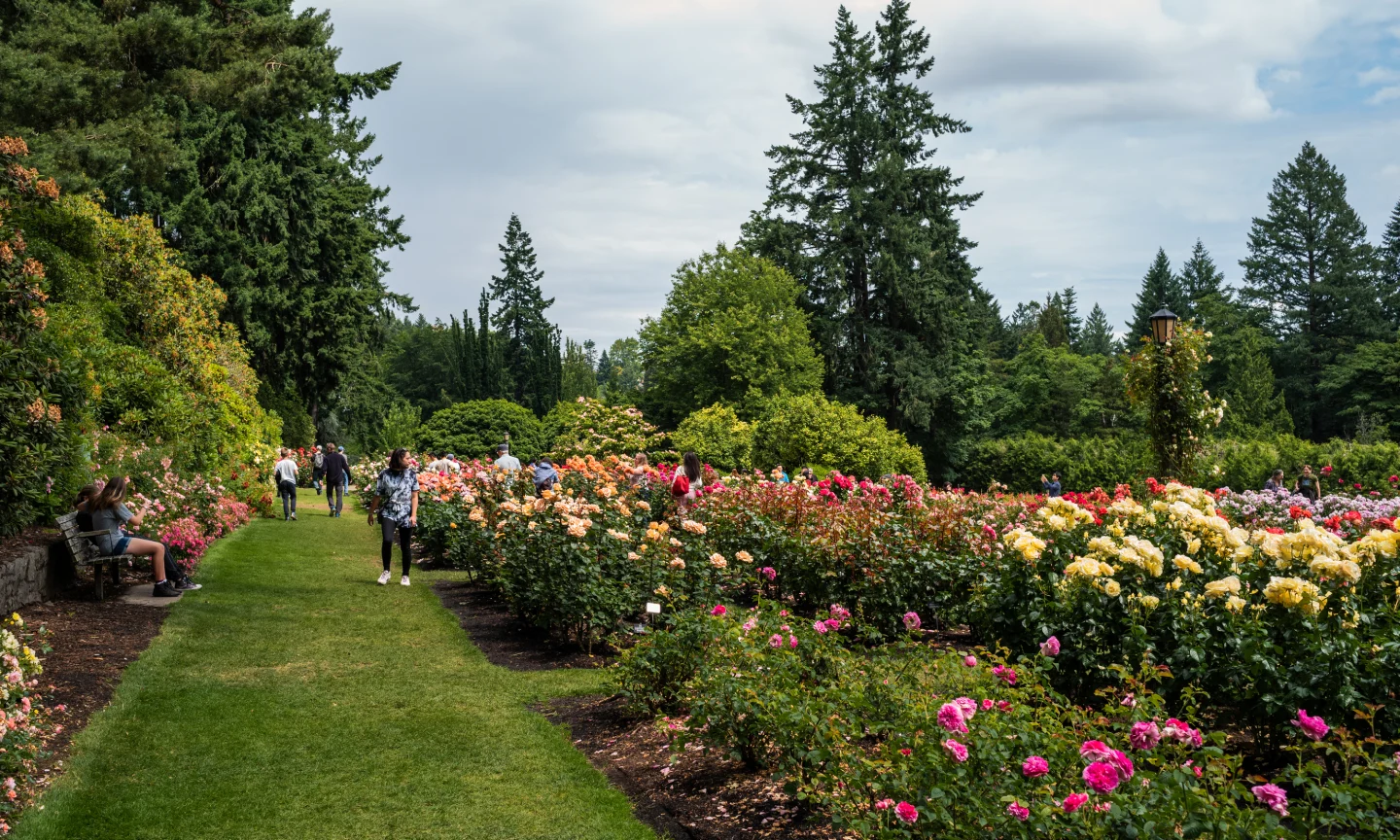
Name and Location: Washington Park encompasses over 400 acres of gardens, trails, and attractions in Portland’s West Hills including the International Rose Test Garden, Portland Japanese Garden, and Oregon Zoo.
History and Significance: Developed in 1871 as one of Portland’s earliest parks, Washington Park grew into a premier destination housing strolling gardens, cultural sites, recreational spaces and the beloved Oregon Zoo linking visitors to Portland’s westside foothills through varied landscapes catering to diverse interests.
What to Expect: Guests explore formal gardens like the International Rose Test Garden, traverse trails passing through forests with vistas, take kids to the zoo’s exhibits, and absorb tranquility while walking through Japanese gardens before pausing at a picnic area under towering fir trees making this park a classic Portland bucket list attraction.
Visitor Information: Washington Park is open daily 5am-10 pm. Some attractions like Hoyt Arboretum have extended hours. Parking areas around the park provide access, though waits occur during peak times. Public transit and walking provide car-free options.
This expansive 400-acre park situated just west of downtown serves as the verdant heart of Portland. Ascend to the International Rose Test Garden here displaying over 10,000 rose varieties against the mountainous backdrop. Nearby, Portland Japanese Garden’s meandering pathways showcase tranquil koi ponds, Zen sand sculptures, bonsai trees and pagodas amid five thoughtfully curated garden spaces over 5.5 acres. Kids scramble up play structures while parents snap iconic photos of Mt. Hood from Duniway Park. And history buffs shouldn’t miss touring timber magnate Pittock Mansion house’s period grandeur.
Tom McCall Waterfront Park

Name and Location: Tom McCall Waterfront Park parallels the Willamette River through downtown Portland for 36 scenic acres of gardens, trails, bridges, and attractions.
History and Significance: Opened in 1978 after extensive riverside redevelopment, Waterfront Park serves as a vibrant pedestrian playground connecting Portlanders to the Willamette River with over 2 miles of walking paths, beautiful gardens, unique sculptures and attractions that host events like the Oregon Brewer’s Festival.
What to Expect: Strolling families watch vibrant river traffic, runners share riverside trails with lounging locals picnicking on open lawns against urban backdrops. Seasonal hours impact restrooms and water fountains, though walking paths stay open 24 hours.
Visitor Information: Tom McCall Waterfront Park has open access daily. Signs guide visitors to parking areas charging nominal fees on weekends. Walking and biking provide car-free options with transit access via streetcar lines and lightrail.
Stroll along the Willamette River downtown through Tom McCall Waterfront Park’s lush lawns and gardens. Watch vibrant spring blossoms burst into life along more than 37 acres of walkways stretching from the Steel Bridge to the south waterfront. Cyclists whiz along the paved multi-use path with Mt. Hood visible on the eastern horizon. Locals meet for yoga sessions against urban skylines on the Great Lawn while others play fetch with four-legged friends. Pop in the Portland Saturday Market to browse eclectic wares before admiring Salmon Street Springs’ choreographed fountain shows. Along Portland’s “front yard,” recreation and relaxation come naturally.
Mt Tabor Park
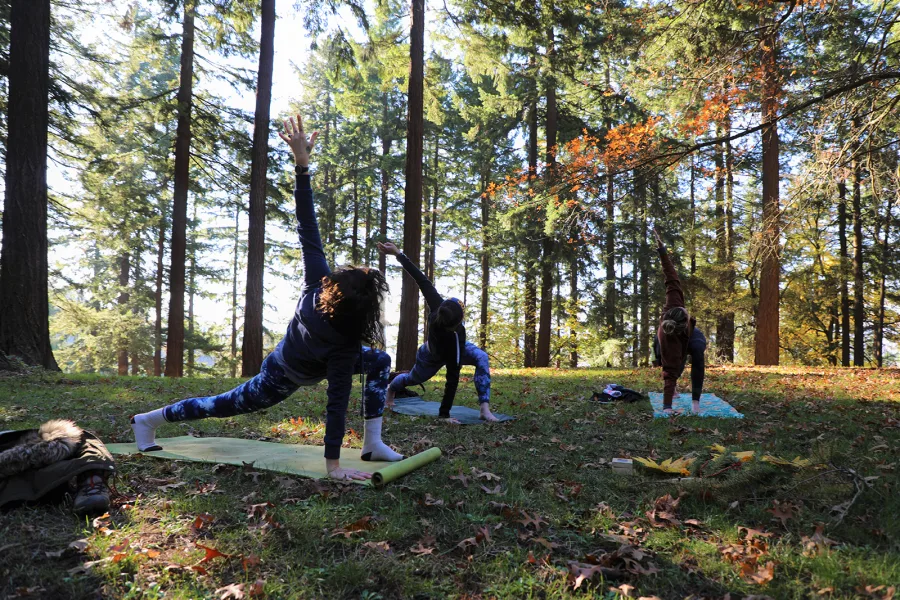
Name and Location: Mt Tabor Park encompasses over 200 acres of recreational spaces surrounding the inactive Mt Tabor volcano cinder cone rising prominently just southeast of downtown Portland.
History and Significance: Part of Boring Lava Field geology, Mount Tabor cinder cone grew behind Portland eras ago, then later developed into a scenic city park hosting reservoirs and great views from its 1903 open-air amphitheater still used for concerts today honoring scenic history behind Mount Tabor’s extinct volcanic origin stories.
What to Expect: Visitors hike winding trails to Mount Tabor’s 1869-foot summit looking out over Portland as dogs roam off-leash areas freely chasing balls across open meadows down below bracketed by native fir and oak trees all around this quintessential volcano turned community park also popular for running stairs or picnicking weekends taking in views of Mount Hood and downtown.
Visitor Information: Open daily 5am-midnight, leashed dogs allowed. An on-site nursery and volleyball courts add attractions. Parking on-street for free or in paid lots. Peak summer months get most crowded during concerts at the historic amphitheater.
Rising provocatively from Southeast Portland’s otherwise flat topography, Mt Tabor’s lone volcanic cinder cone morphs into the lush oasis of Mt Tabor Park. More than 10,000 trees populate 196 acres of picnicking fields, recreation spaces and reservoir loop trails orbiting the mountain’s crest. Photographers flock here for unparalleled sunset views of Mt. Hood and downtown Portland over reservoir waters turned pink and gold with colorful kayakers paddling below. Off-leash areas give pups space to roam as runners power their way up the mountain’s challenging trails to stellar vistas.
Laurelhurst Park

Name and Location: Laurelhurst Park encompasses 26 acres of recreational spaces just east of the Willamette River in Portland’s Laurelhurst neighborhood anchored around a scenic pond with pedal boats, tree-lined walking paths and off-leash dog areas.
History and Significance: Developed 1909 upon the former Stark Street Hazel Fern Farm estate after its donation by the Laurelhurst Co. to establish a community park, Laurelhurst Park grew through the early 1900s into a scenic greenspace sharing mythic stories like the Sunken Ship pirate folklore still embraced today by locals who walk the asphalt loop trail circling picturesque Laurelhurst Pond.
What to Expect: Visitors hike the one-mile loop around Laurelhurst Pond sighting mallard ducks floating amid lilypads, watch kids steering pedal boats across the water trailed by hopeful dogs bounding after sticks along the shore, capture photos of the historic concrete bridge, or simply laid out picnic blankets oceanside this urban oasis watching falling leaves float across the serene pond each autumn.
Visitor Information: Laurelhurst Park is freely open to visitors 5am until midnight daily. On-street parking dots surrounding neighborhood blocks with all trails accessing this iconic Portland city park open year-round for community respite and legends.
Comfortably settled into Southeast Portland’s Laurelhurst neighborhood, this 26-acre park charms locals daily.classifieds stroll the park’s paved loop trail circling a duck-dotted central pond before letting kids roam Wildwood Trail leading into Forest Park. Off-leash pups sprint across open fields while families fire up grills at reservable picnic areas. In warmer months, rows of food carts pull up in the park blocks away providing Portland’s iconic mobile eats. With towering sequoias and a quintessentially neighborhood vibe, Laurelhurst Park supplies laid-back stays for all.
Peninsula Park
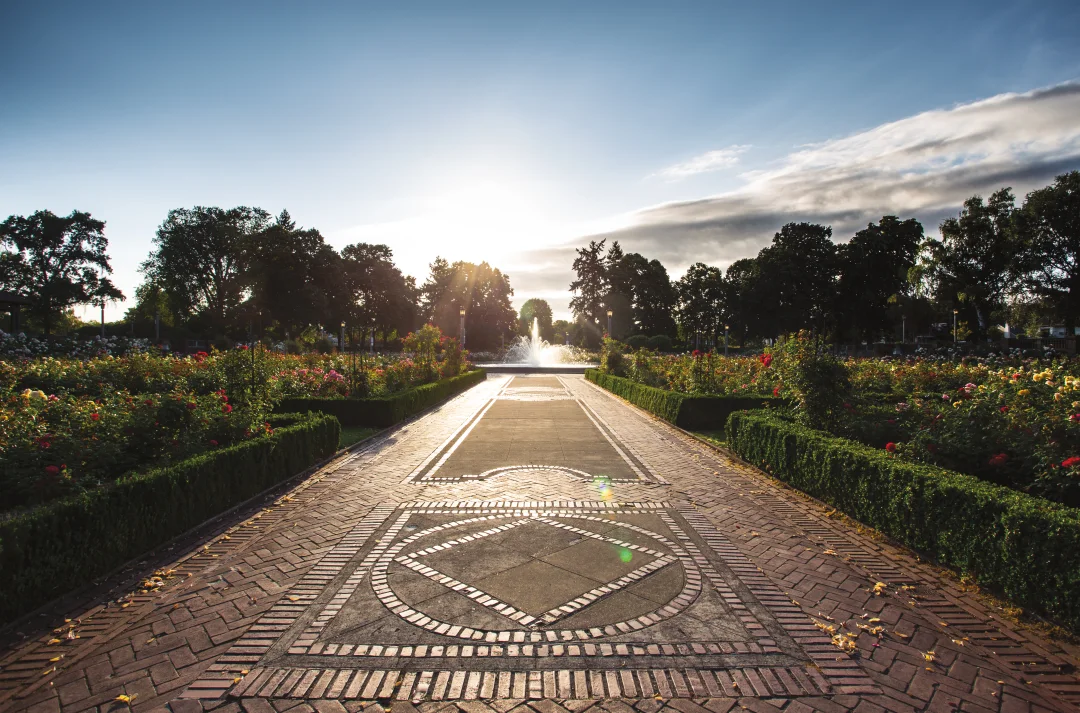
Name and Location: At nearly 16 acres, Peninsula Park represents Portland’s first city park, located in the Piedmont neighborhood of north Portland near the confluence of the Willamette River and Columbia River.
History and Significance: Originally purchased 1864 from pioneer landholder Captain John Couch then developed only two years later, Peninsula Park holds dual distinctions as Portland’s first designated park while also containing the city’s oldest cultivated rose garden dating over 100 years as special garden space that colors summer strolling through Portland’s scenic public spaces.
What to Expect: Visitors amble along curving walking paths under big leaf maples passing the central circular fountain, view the historic community center built by Depression-era artisans, smell hundreds of roses raising their blossoms inside peaceful gardens, play tennis or handball at active courts, read under shady trees, and generally explore this pioneering city park pioneered back when Portland itself incorporated as a West Coast metropolis centered around its waterfronts at the rivers’ meeting point.
Visitor Information: Peninsula Park is open daily 5am until midnight year-round, containing lighted pathways with complimentary rose garden access welcoming pedestrian visitors alongside an array of active courts and field spaces available for neighborhood use through free stop-in access or scheduling.
As one of Portland’s first developed green spaces dating back to 1909, the scenic 16-acre Peninsula Park delivers tree-shaded lawns and vibrant blooms beside the Willamette River. Portland Rose Society members tend Peninsula Park’s rose gardens bursting with over 7,000 blooms in varying hues. Grab a picnic blanket on the great lawn or let pups roam free through designated areas as cyclists whiz by on riverside bike paths. Glimpse herons and osprey fishing in the river shallows along meandering trails. And with occasional dragon boat races and paved pathways looping the park, Peninsula supplies scenic recreational escapes near downtown.
Tryon Creek State Natural Area

Name and Location: Tryon Creek State Natural Area occupies 670 acres of protected woodlands following Tryon Creek through rolling terrain in Portland’s southwest hills between Lake Oswego and West Portland.
History and Significance: Acquired jointly to conserve park space for public access, education and enjoyment, Tryon Creek’s lush forests filled with bigleaf maples, Douglas firs and redwoods let visitors escape into nature only minutes from Portland traversing over 10 miles of hiking trails past ferns or resident wildlife like newts and pileated woodpeckers hidden within this expansive wooded habitat.
What to Expect: Guests explore winding dirt footpaths under a thick forest canopy in Tryon Creek park spotting massive ferns and moss-cloaked logs across the hilly terrain bisected by a rippling creek revealing small waterfall cascades during seasonal rains when the smells of cedar and fir needles heighten senses seeking a retreat into the Pacific Northwest’s enchanting evergreen landscapes.
Visitor Information: Tryon Creek’s trail system stays open daily 5am-10pm for public hiking access year-round by free permit available onsite. Some weekday closures occur during winter months. Leashed pets allowed on most trails, with horseback riding allowed seasonally following regulations.
Venture within Portland city limits to Tryon Creek’s lush river valley hugging the Willamette River in southwest Portland. More than nine miles of woodland hiking trails loop visitors through towering firs, thick ferns and massive maples lining Tryon Creek inside its 1,200 acre preserve. Over 200 bird species from red-breasted sapsuckers to winter wrens flit through the old-growth canopy. Cyclists can challenge themselves on the park’s strenuous singletrack options while families or couples opt for gentle nature walks to admire trillium wildflowers carpeting the forest floor each spring. As a prime regional example of temperate Pacific Northwest rainforests interfacing with urban space, Tryon Creek remains essential for connecting Portlanders to native landscapes.
Tanner Springs Park
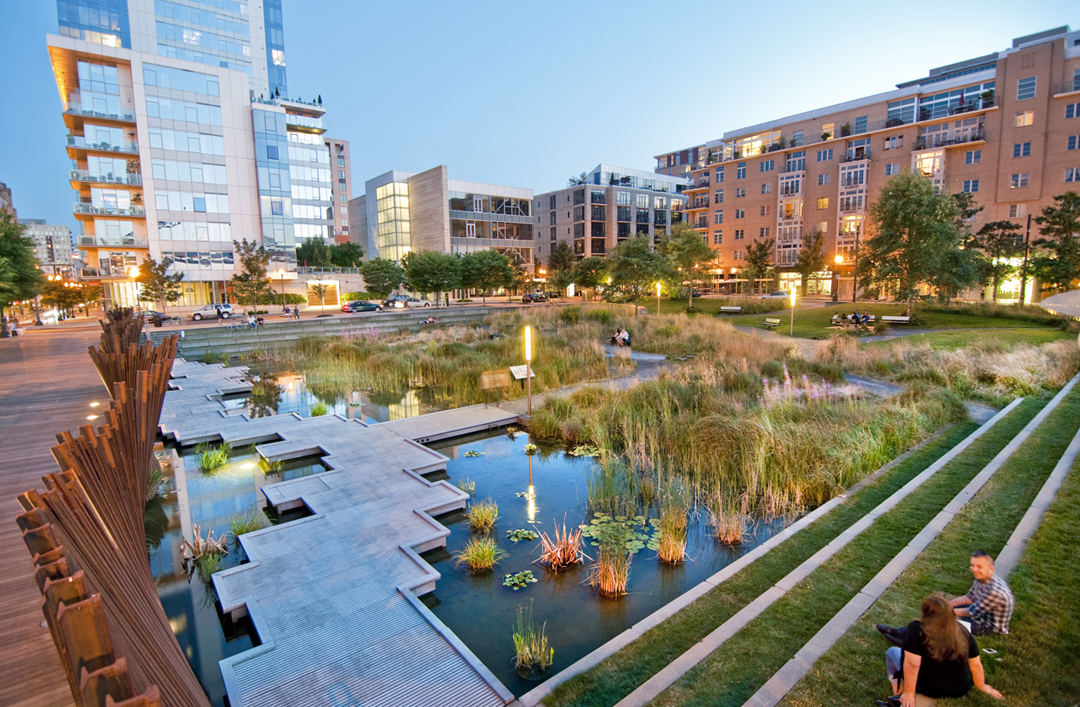
Name and Location: Tanner Springs Park represents a unique urban wetland environment and neighborhood greenspace spanning nearly one acre on NW Marshall within Portland’s chic Pearl District filled with outdoor art installations, native gardens and sustainable landscapes.
History and Significance: Funded by Portland Parks and Recreation alongside support from Portland General Electric transforming former parking lots into vibrant community space, Tanner Springs Park’s reclaimed water features, boardwalks and habitat gardens tie into surrounding upscale high-rise architecture as idyllic sanctuary celebrating sustainable design principles through creative placemaking and engaging environmental art.
What to Expect: Visitors absorb integrated design elements from reclaimed wood boardwalks guiding pedestrians over seasonal wetlands toward Joshua Speer’s iconic bird migratory sculpture, contained gardens fertilized using neighborhood dog parks, and native species like towering Western red cedars cohabitating seamlessly highlighting sustainability milestones woven into Portland’s central modern districts.
Visitor Information: Tanner Springs Park is open daily all hours located in downtown Portland’s swanky Pearl District as free admission urban greenspace blending nature, public art, thoughtful design and habitat restoration empowering community wellness through Ecotone principles supporting local ecology and placemaking.
Unlike typical playgrounds around grassy fields, this unique pocket park celebrating sustainability transforms a downtown Portland road median into an educational natural refuge. Designed through a series of micro-habitats nurturing native wetland and woodland species, Tanner Springs Park provides crucial urban habitat. Visitors cross spiraling trails over babbling marsh waters on wooden boardwalks, ducking under vine maples to spy nesting birds. An amphitheater tucked amid native camas lilies and black hawthorns hosts environmental programming while steaming grates reference the area’s hot springs history. As a model of urban ecological design, Tanner Springs Park shapes greener futures.
Governor Tom McCall Waterfront Park

Name and Location: Governor Tom McCall Waterfront Park extends along the Willamette River downtown for over 36 acres of walking trails, gardens, bridges and attractions in tribute the governor who championed livability and conservation in Oregon.
History and Significance: Constructed 1978, Waterfront Park commemorates Tom McCall’s legacy serving as vibrant riverside playground connecting Portlanders to the Willamette River through two scenic miles of walking paths passing attractions like Friendship Circle fountain while hosting beloved events such as the Oregon Brewers Festival among park highlights like the salmon spring water feature and Battleship Oregon mast memorial.
What to Expect: Strolling families watch colorful river traffic drift by including tour paddle boats or lively dragon boats while runners share riverside trails with locals picnicking on open lawns against urban backdrops where seasonal hours impact amenities but paved promenades stay passable 24 hours allowing riverside relaxing all hours against cityscapes.
Visitor Information: Waterfront Park’s pedestrian paths allow open access daily/nightly to visitors. Parking garages and metered areas offer nearby vehicle access, though transit options exist via streetcar lines to limit automobiles within Portland’s scenic riverside gateway.
Encompassing riverfront green space from the Steel Bridge down to RiverPlace, Waterfront Park stretches along the Willamette for nearly 40 acres of paths perfect for riverside rambling. The manicured lawns of the Central & North District give way to more naturalized areas along the bank sheltering river wildlife through the greenery as you walk south. Watch as herons spear for catches while joggers pound by on adjacent running trails. Catch the pink and teal bursts of Salmon Street Springs’ choreographed fountain shows. And in September when summer wanes, Waterfront Park hosts the Portland Blues Festival across multiple dance floors and stages.
The Fields Neighborhood Park
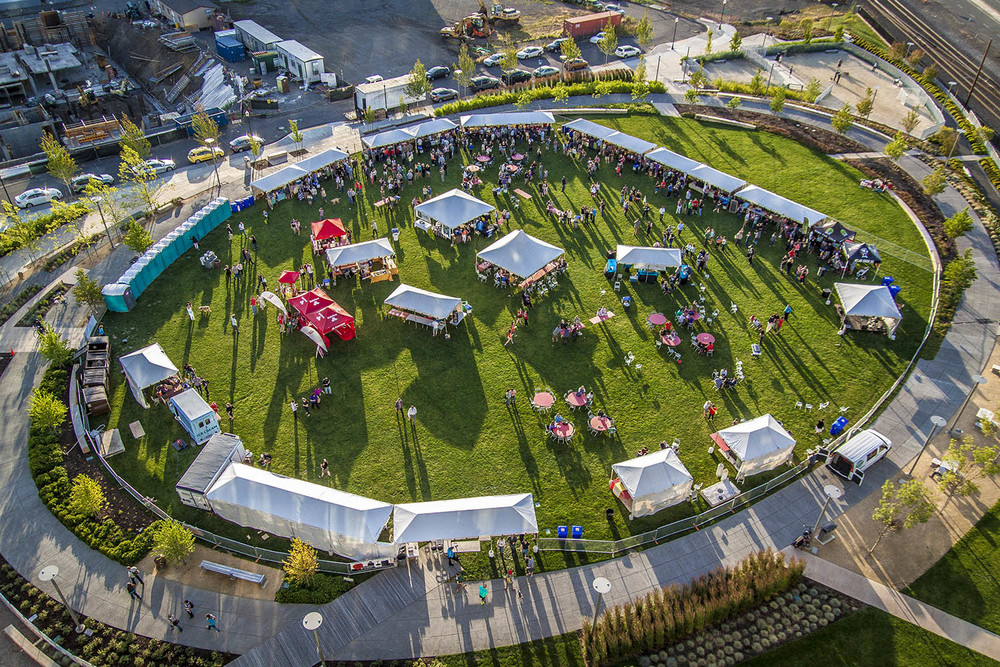
Name and Location: The Fields Neighborhood Park comprises a 7-acre greenspace along NW Overton Street in Portland’s Pearl District offering dog parks, public art, walkways and community lawns as recreational outlet.
History and Significance: Once industrial land, voter-approved bonds 2000 funded Pearl District revitalization creating The Fields community park as sustainable hub for recreation and events positively transforming unused rail yards into vibrant public space with development paving way for expanding Portland density in coming decades across visionary urban planning.
What to Expect: Visitors unleash dogs at designated play areas contained within The Fields fenced-in acreage or explore walkways passing artistic water fountains flanked by log benches and metal light sculptures accenting vast lawn often accommodating yoga classes or summer movie screenings emblematic of Portland livability.
Visitor Information: The Fields Neighborhood Park lies open daily 5am until midnight at the edge Pearl District along NW Overton Street bound by 10th and 11th Avenues offering free public access supporting downtown wellness through progressive community planning.
Tucked into the vibrant and creatively offbeat inner southeast Portland neighborhood bearing its name, The Fields Neighborhood Park provides a hub for community. Whimsical public art installations fill a winding walking trail bordering the property, from clacking pipe sculptures to towering wood structures reminiscent of oversized birdhouses. Every corner offers artistic inspiration, whether admiring the splashes of an interactive water sculpture or giant stone mosaic mural celebrating neighborhood diversity. When legs tire, spread a blanket across the open lawn to appreciate this quirky green space’s invigoration of overlooked urban areas.
Oaks Bottom Wildlife Refuge
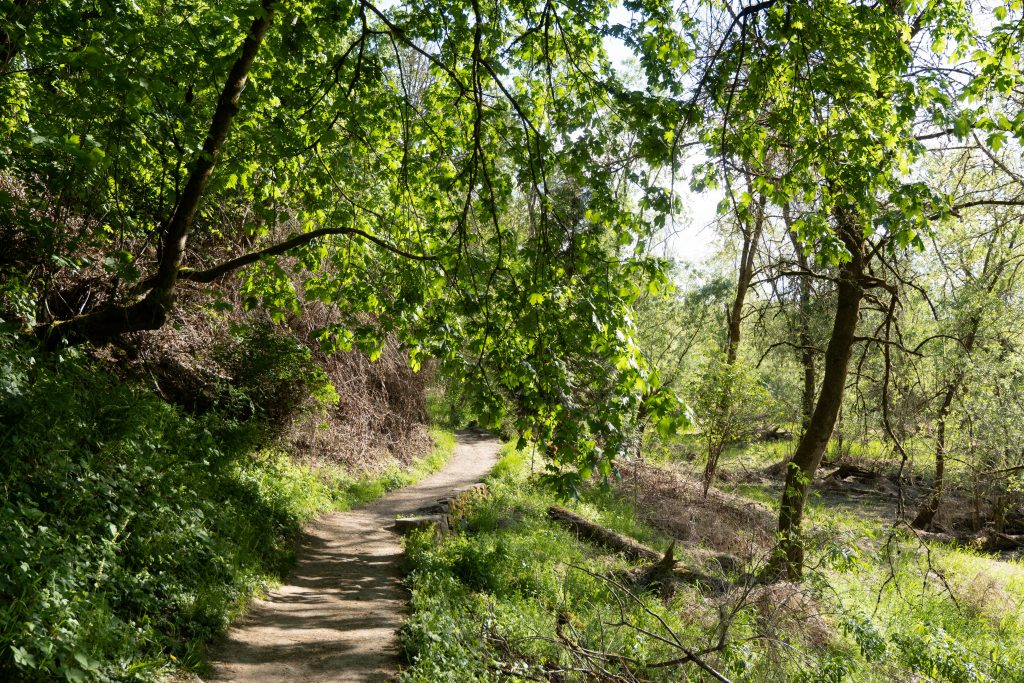
Name and Location: Oaks Bottom Wildlife Refuge represents 140 acres of wetland habitat conservation land located along the Willamette River banks below steep forested bluffs linking urban southeast Portland overlooking the Sellwood neighborhood in preservation efforts establishing protected sanctuary.
History and Significance: First conserved 1989 preventing industrial development then expanded recently through public and nonprofit cooperation, Oaks Bottom provides critical migratory respite for over 100 avian species along the river including nesting bald eagles once threatened as Portland prioritized responsible stewardship and rehabilitation around sensitive wildlife concerns treating the refuge as ecological treasure highlighting why conservation matters framing city skylines.
What to Expect: Visitors traverse over 5 miles of walking trails spotting Portland’s famous eagles alongside beavers, otters, deer and myriad birds dotting vibrant wetland areas filled with native plants trailside one of Portland’s notable wildlife refuges bringing people closer to nature through engaging educational interpretive resources near eastside neighborhoods.
Visitor Information: Oaks Bottom Wildlife Refuge trails remain open daily 5am until midnight for wildlife observation and walking access year-round. Some seasonal closures of certain land sections occur during sensitive falcon nesting periods requiring ecological protection through community partnership supporting avian health along Portland’s waterway.
Beloved by birdwatchers across the greater Portland region, Oaks Bottom Wildlife Refuge brings wooded wetlands teeming with over 100 avian species to the city’s east side. Spring migration fills the park’s 150 acres with returning and passing songbirds like yellow warblers and song sparrows. Wood ducks, kingfishers and great blue herons call the habitat’s forested islands rising from marshy Willamette River backwaters home. While protecting treasured wildlife, Oaks Bottom still invites respectful visitors to quietly explore meadow trails spying Portland’s bustling skyline only miles away yet deliciously beyond reach.
Hoyt Arboretum

Name and Location: Hoyt Arboretum represents 190 acres of global trees & plants accessible by 12 miles of hiking trails located within Portland’s iconic Washington Park with vistas overlooking the picturesque city skyline.
History and Significance: Named after prominent Portland business leader who championed nature preserves, Hoyt Arboretum began after the city purchased acreage in 1938 to establish an extensive public green space dedicated to cultivating internationally comprehensive tree collections for visitor education, research and enjoyment.
What to Expect: Guests explore winding dirt trails Identifying labeled flora spanning continents across the sloping grounds dotted with benches for resting amid towering redwood stands all framed by panoramic overlooks facing downtown Portland through openings in the lush treetop canopy finding brief escapes into nature’s hallmark beauty minutes from urbanism below.
Visitor Information: Hoyt Arboretum is freely open to visitors daily from 5am until 10pm for self-guided walking with over 12 miles of hiking trails available containing educational signs identifying vast botanical collections throughout 190 acres of gorgeous public urban greenspace.
Transport yourself among global forests by wandering through Portland’s Hoyt Arboretum. Over 1,000 species of trees and plants from across six continents populate 227 acres of the park cloaking in picturesque NW hills. Collections spotlight magnolias in vibrant bloom or unusual monkey puzzle and bunya pines of the Southern Hemisphere. Themed guided tours decode plant taxonomy, uses by indigenous cultures and conservation connections. Kids scramble over Invention Garden’s musical structures near Sequoia Overlook’s panoramas while visitors of all ages find both education and enchantment along the Arboretum’s 12 miles of walking trails threading through diverse flora.
When seeking green escapes, Portland residents need only pedal or drive minutes from urban density to access abundant nature. From downtown’s multifaceted cultural hub to the misty old-growth folds of Forest Park, Portland’s identity remains rooted in the interface between vital metropolis and accessible wilderness outposts promising adventure. Follow mossy trails through tranquil forests or linger lakeside watching playful otters–then cycle back downtown to catch Portland’s next quirky happening. Effortlessly moving between worlds, that’s just quintessentially Portland.



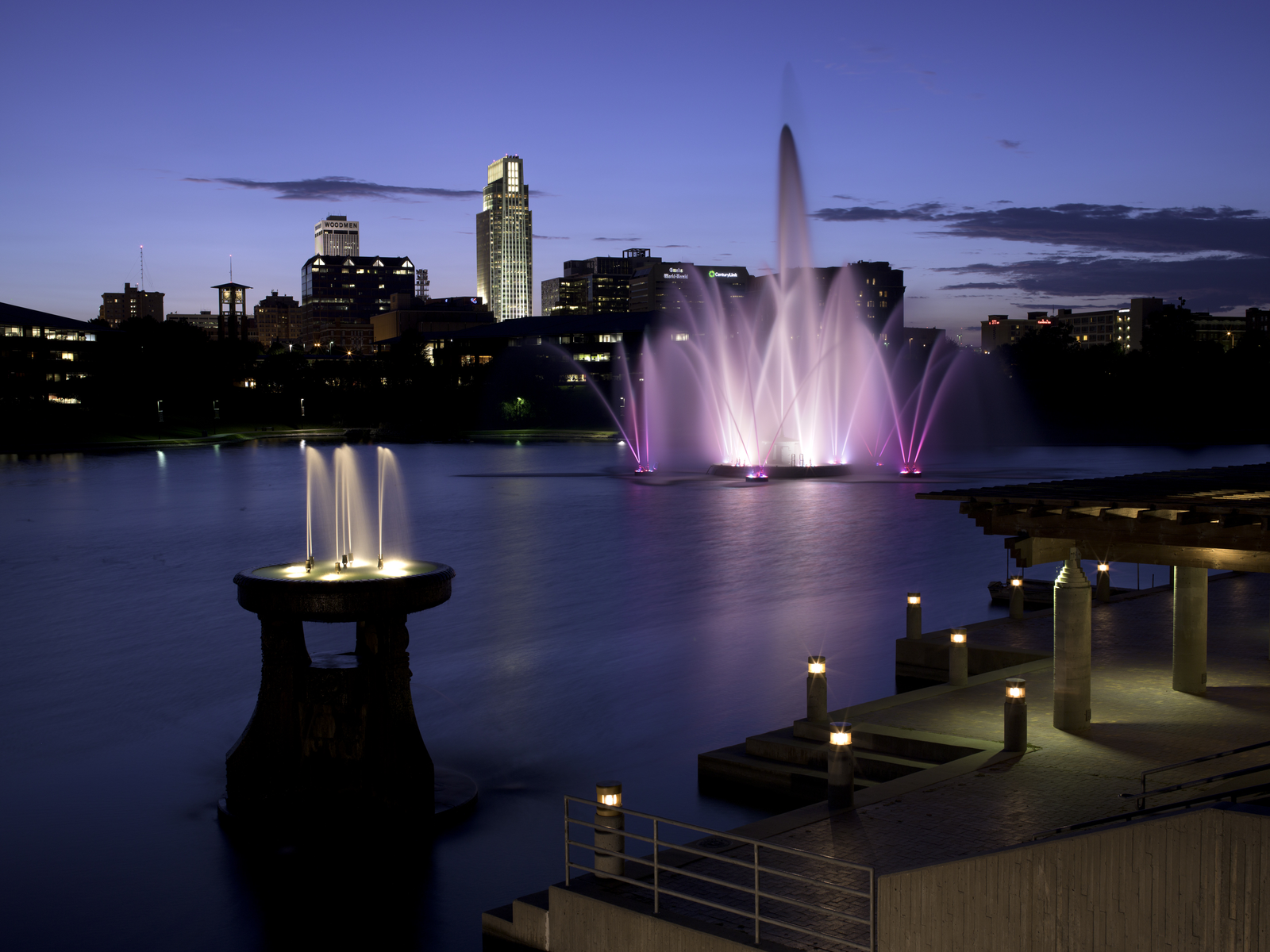
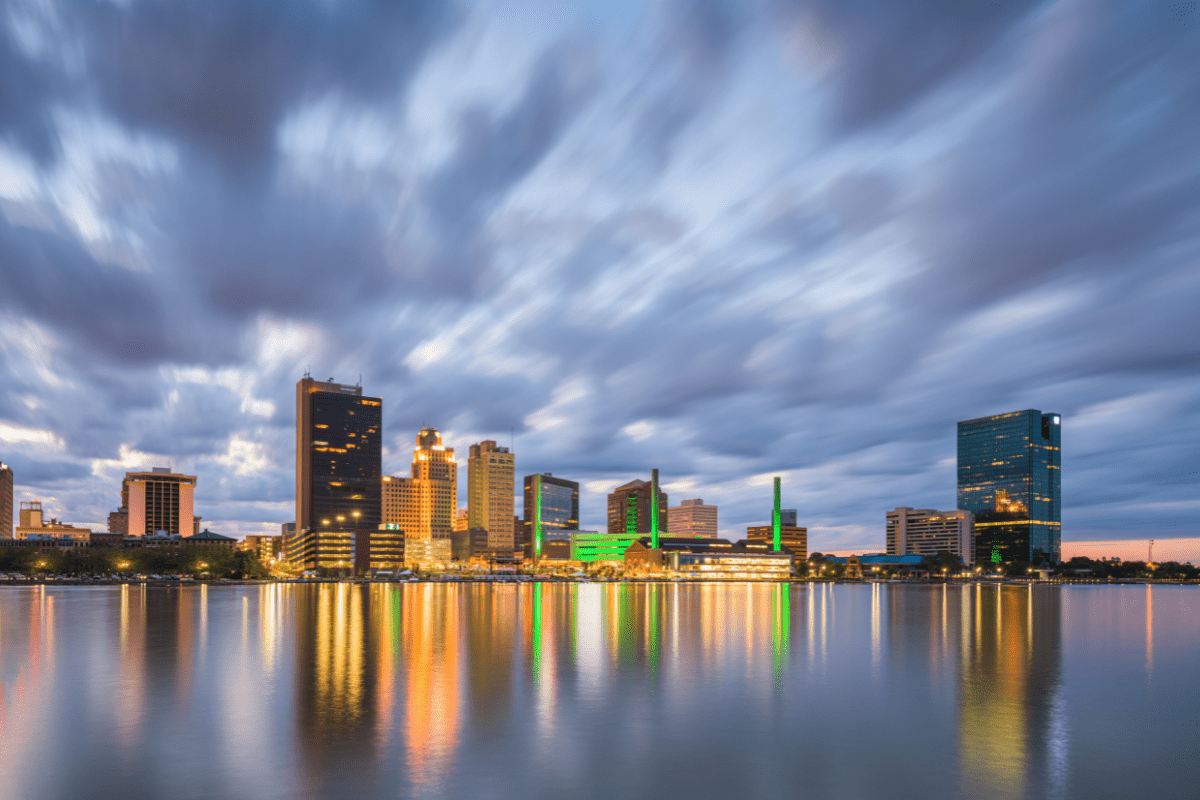
Join the Conversation